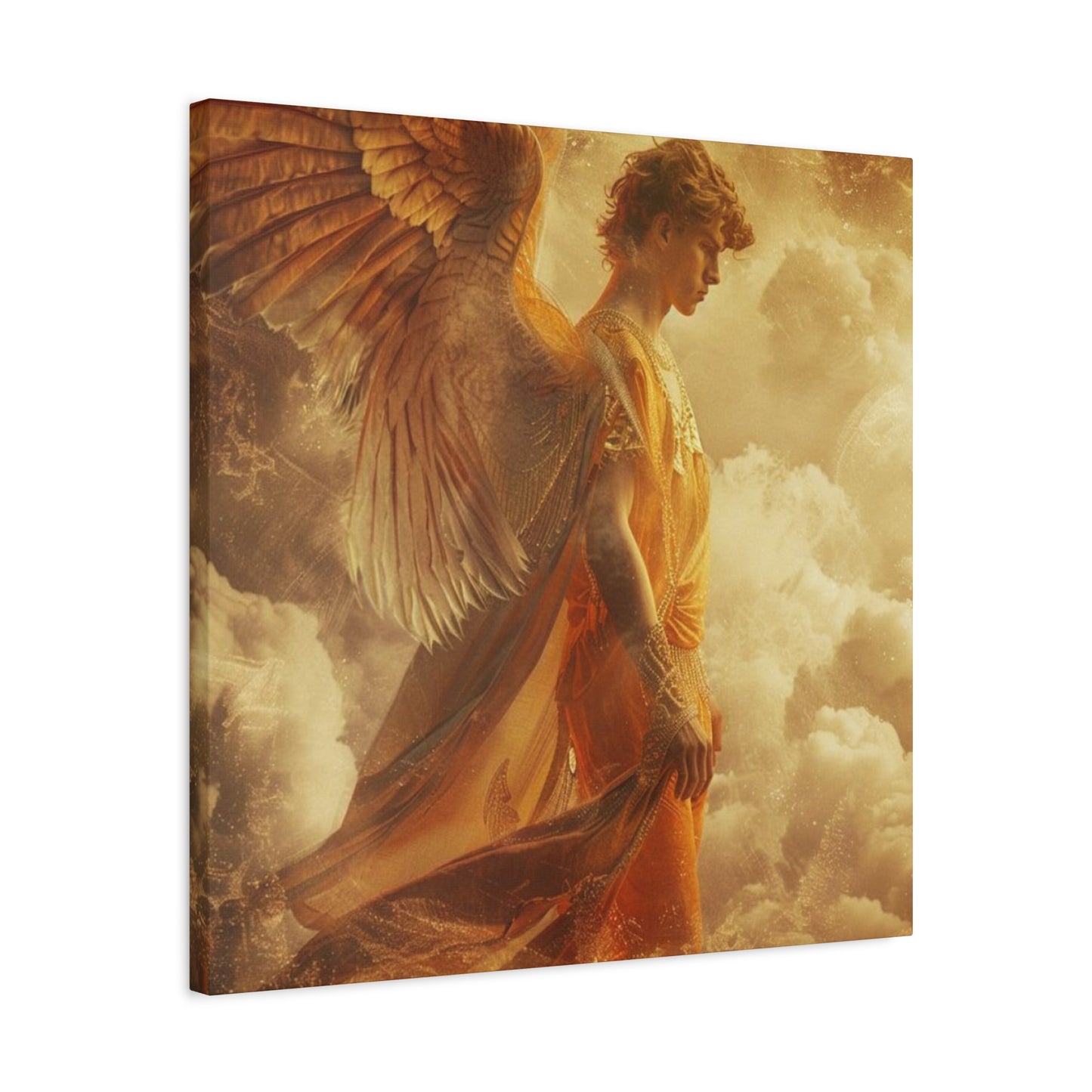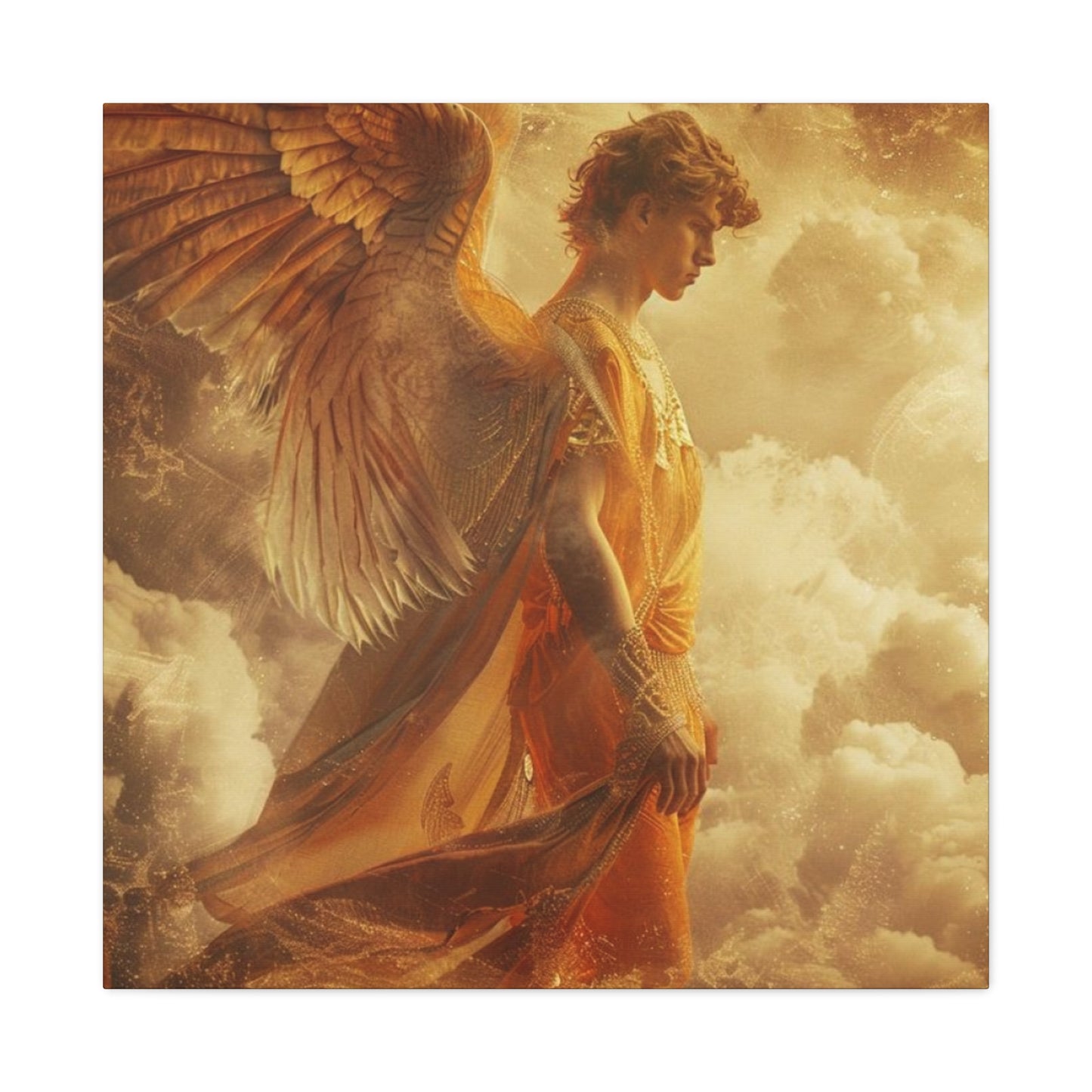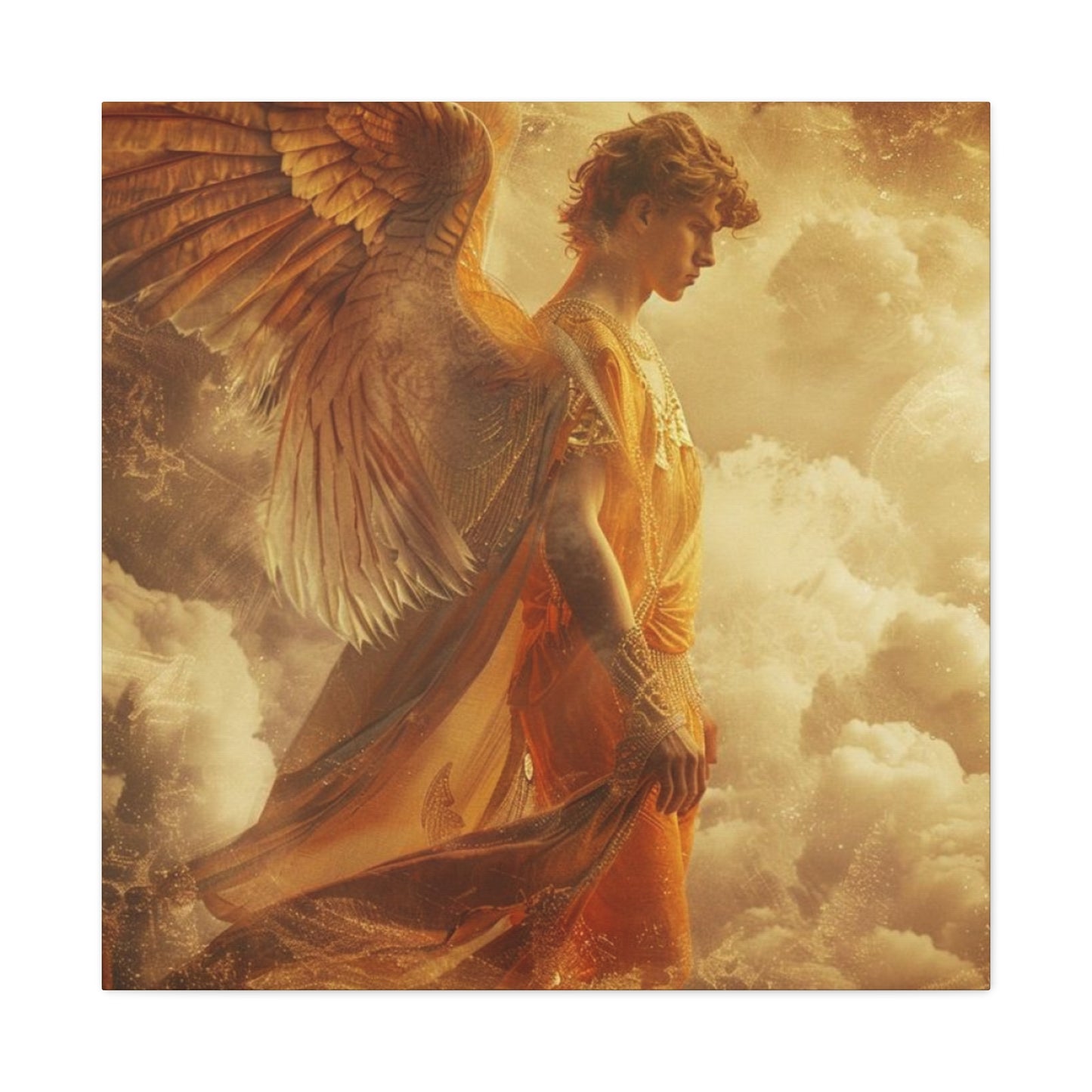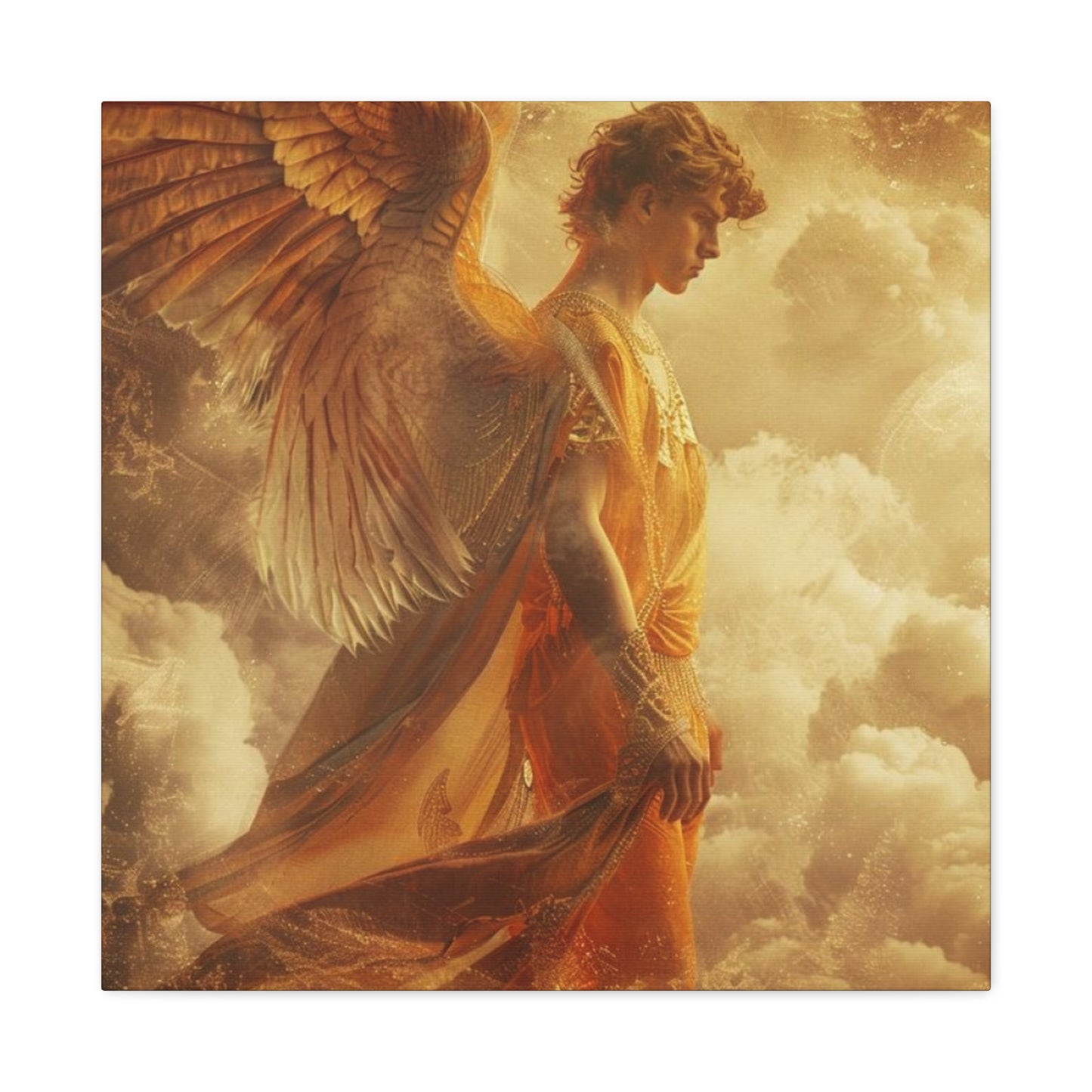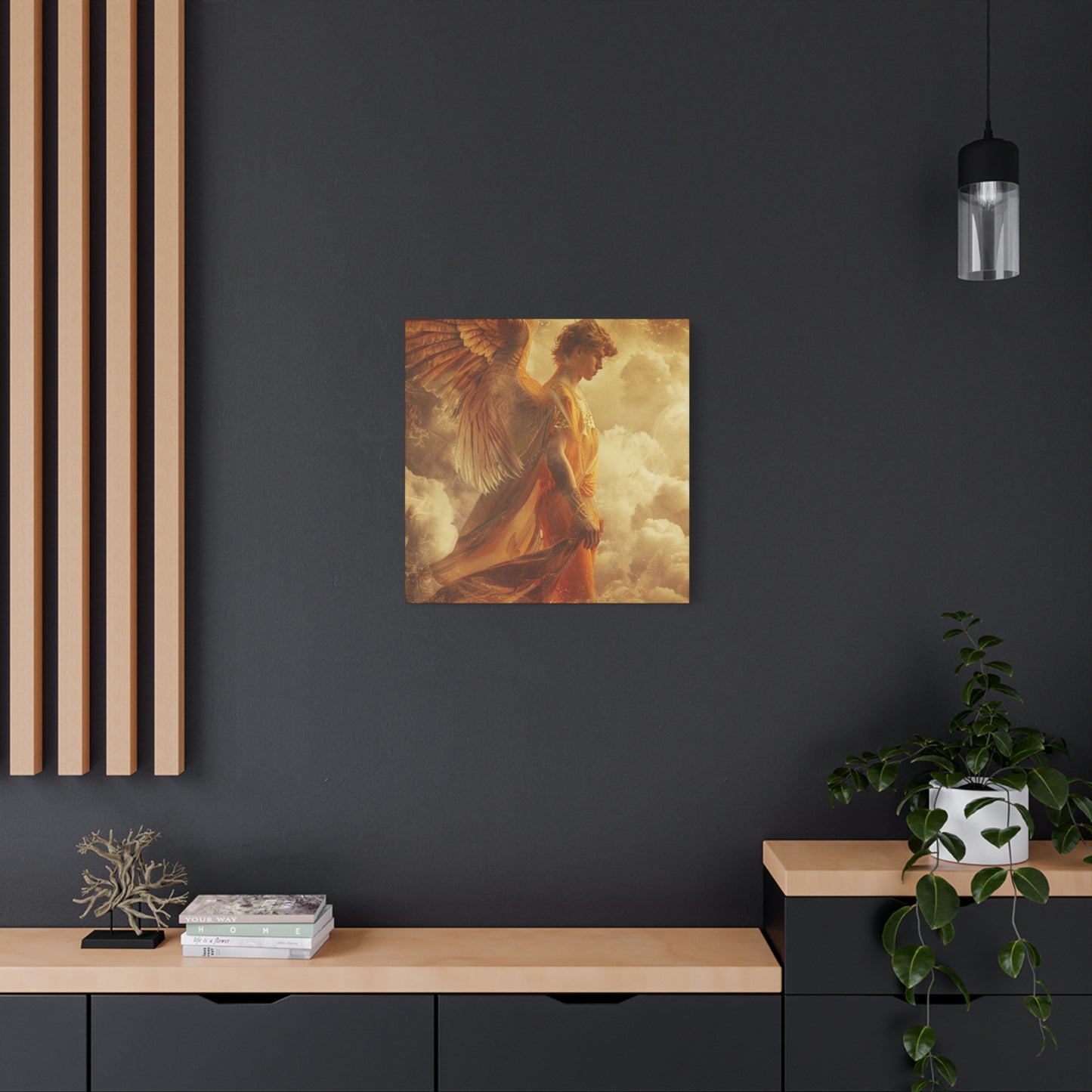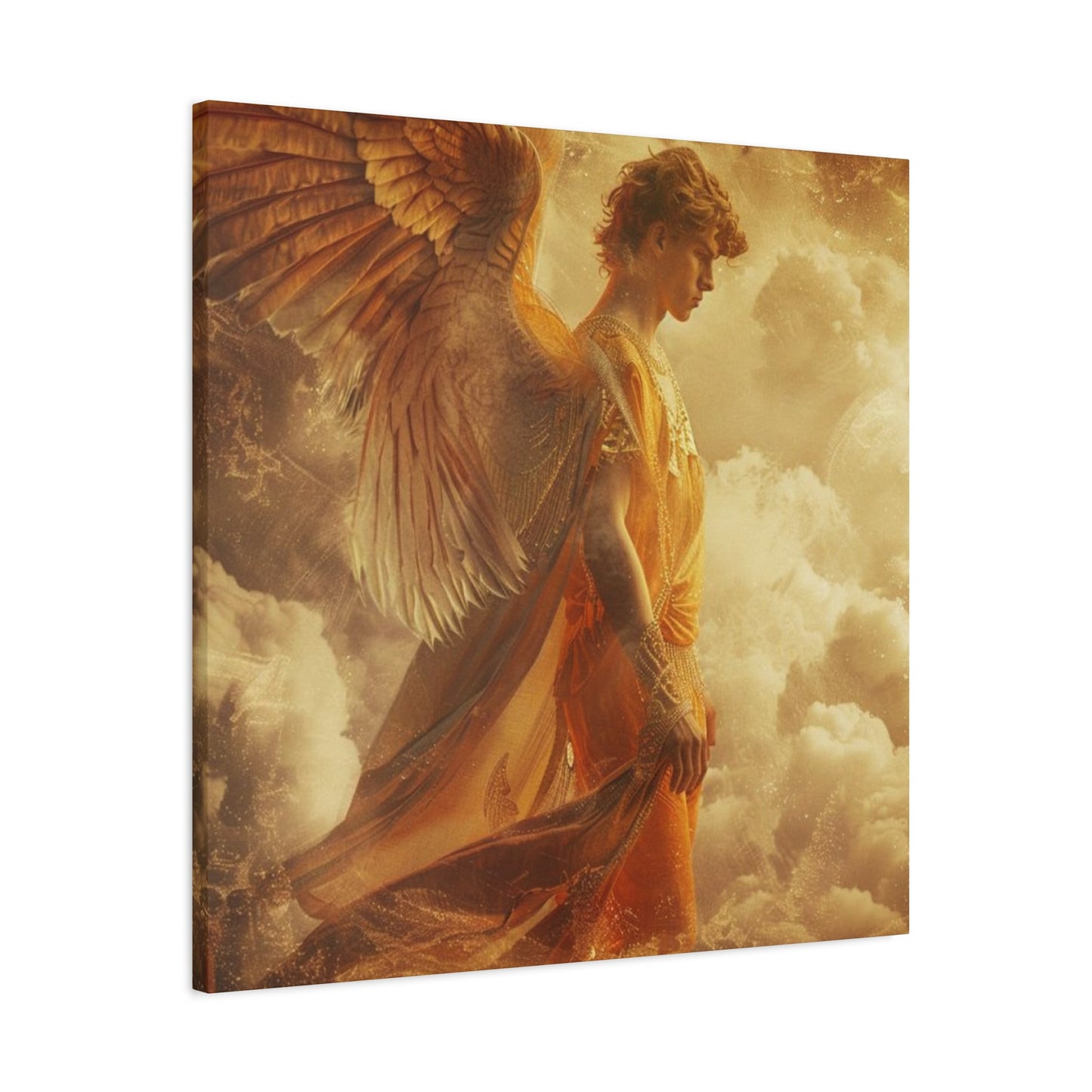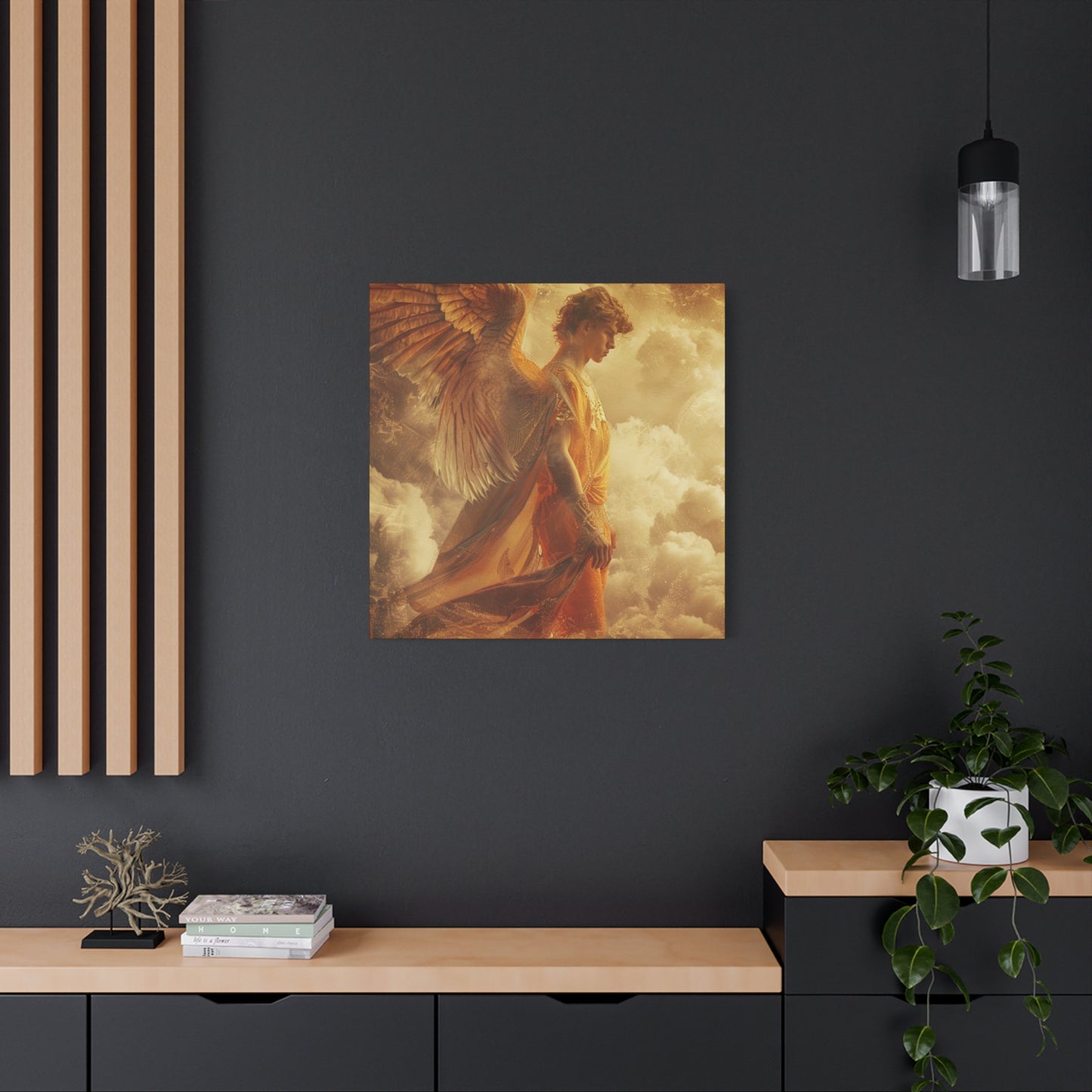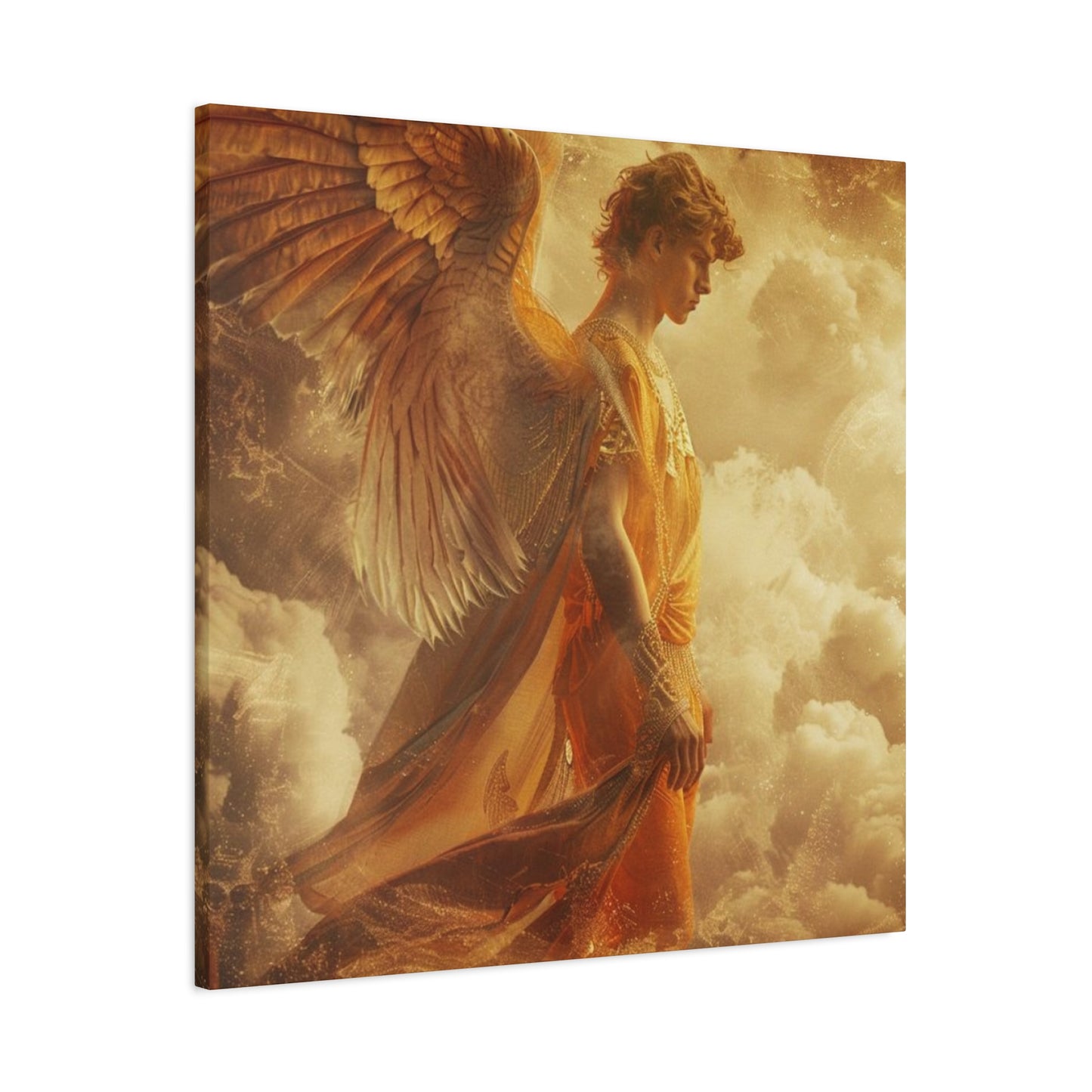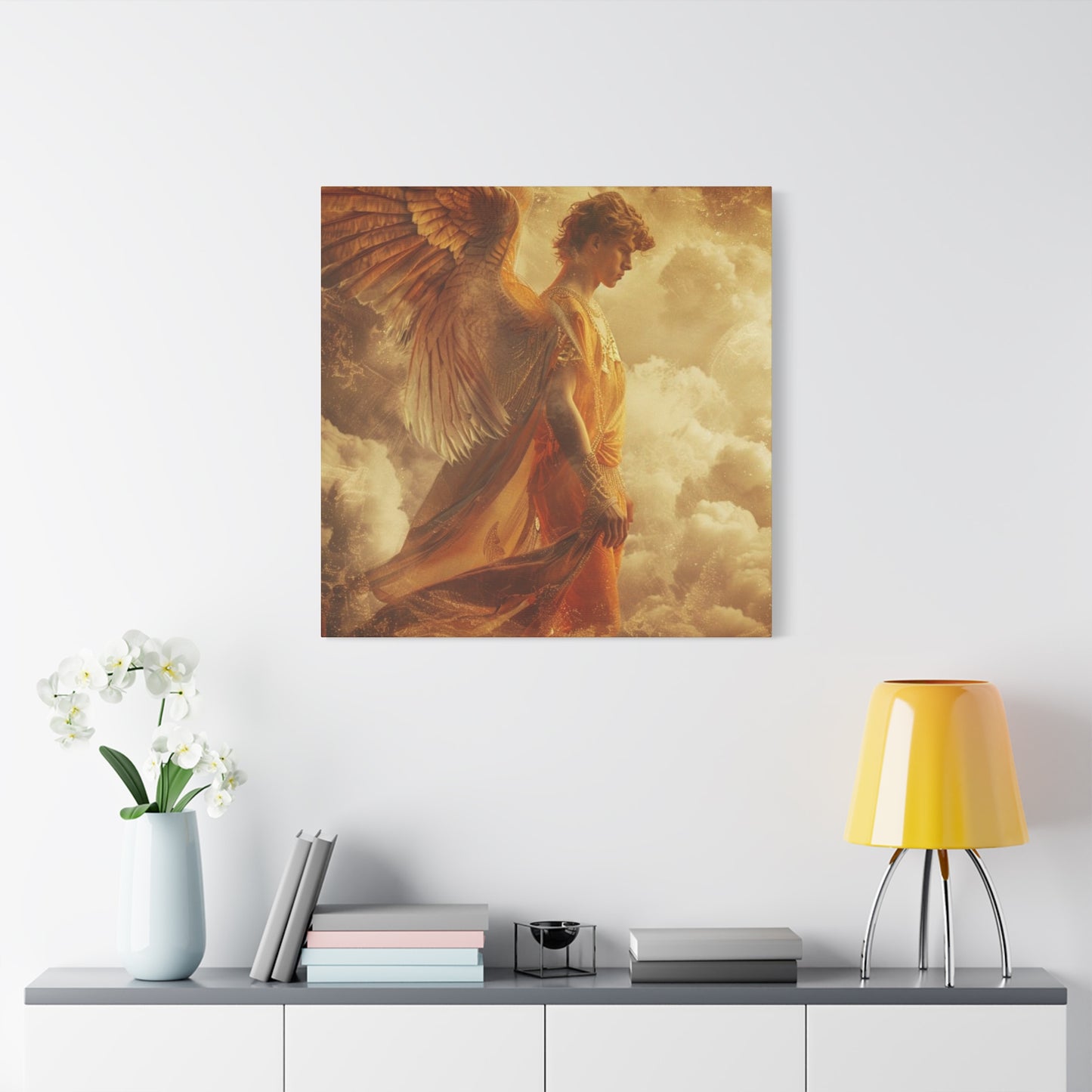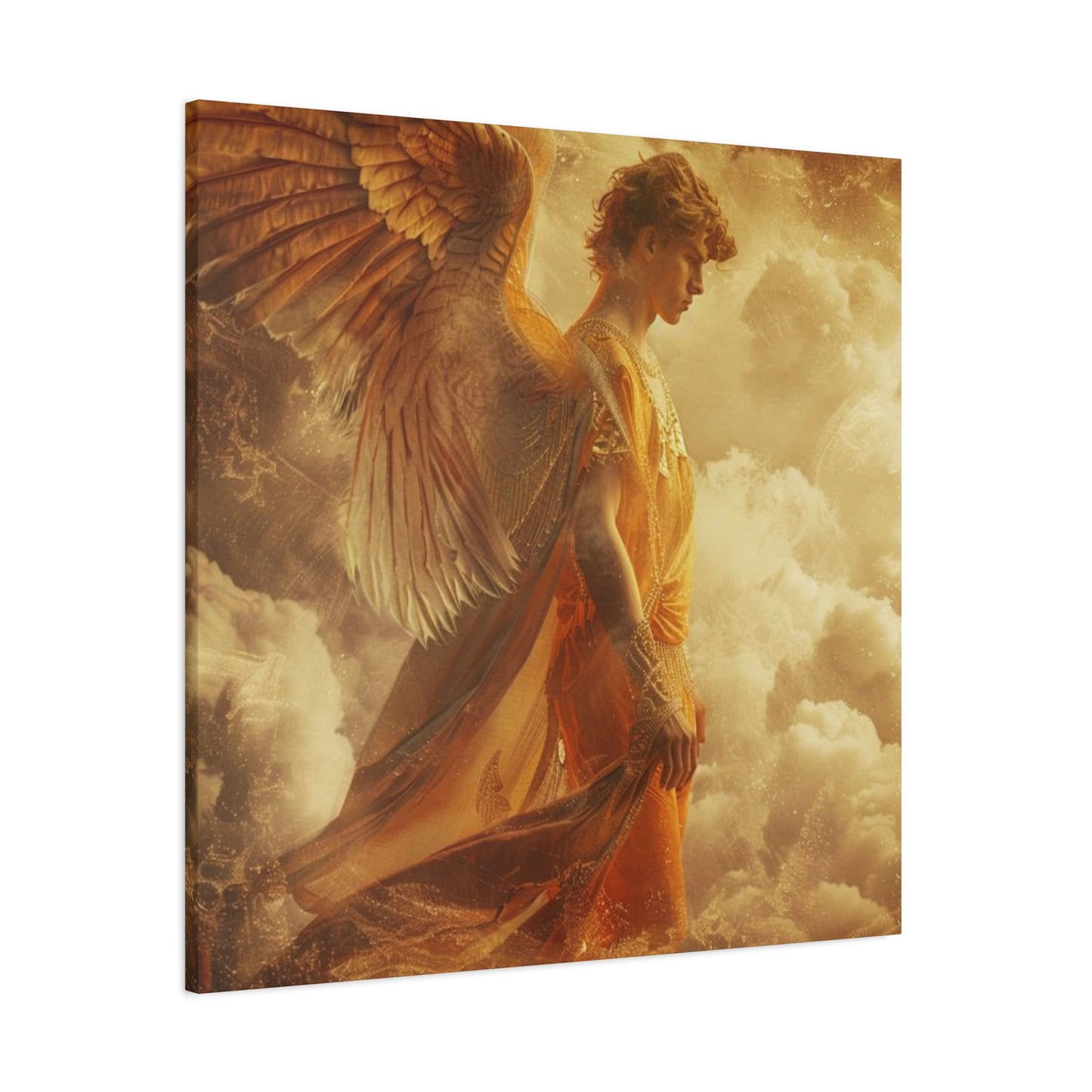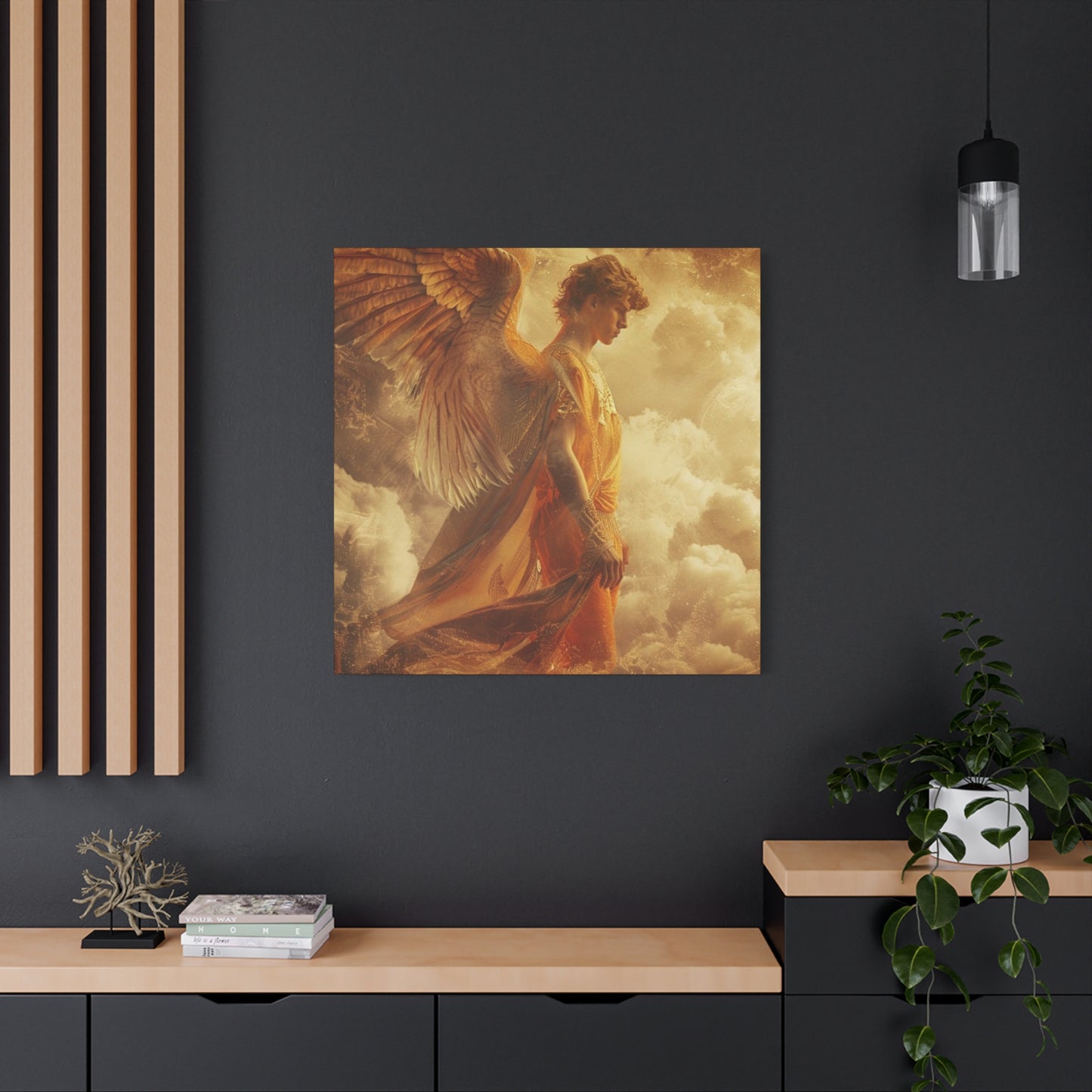Transforming Walls into Legends: How Uriel Fantasy Wall Art Redefines Home Aesthetics
The majestic red rock formations, towering arches, and breathtaking vistas of Utah's protected wilderness areas have captivated photographers, artists, and nature enthusiasts for generations. These stunning natural wonders now find their way into homes and offices through carefully crafted canvas reproductions that capture the essence of these remarkable landscapes. The process of selecting the perfect artwork to represent these iconic locations involves understanding both the artistic value and the emotional connection these places inspire in viewers.
Canvas prints featuring Utah's national parks offer more than simple decoration. They serve as windows to some of America's most spectacular natural environments, bringing the grandeur of the outdoors into interior spaces. Each piece tells a story of geological wonder, natural beauty, and the timeless appeal of unspoiled wilderness. For those who have visited these locations, such artwork serves as a powerful reminder of memorable experiences. For others, these pieces inspire future adventures and create connections to places they hope to explore someday.
The popularity of national park themed wall art has grown substantially over recent years, reflecting broader cultural trends toward nature appreciation and outdoor recreation. People increasingly seek to incorporate natural elements into their living spaces, recognizing the psychological benefits of connecting with nature even while indoors. Utah's distinctive landscapes, with their unique color palettes and dramatic formations, provide particularly compelling subjects for this type of decorative art.
The Five Mighty Parks of Utah's Canyon Country
Utah holds a unique distinction among American states by hosting five nationally designated park areas within its borders, each offering distinct geological features and visual characteristics. These protected lands showcase millions of years of natural history written in stone, with layers of sedimentary rock revealing ancient seas, deserts, and river systems. The diversity of formations, colors, and landscapes within relatively close proximity makes Utah an exceptional location for nature enthusiasts and art collectors alike.
Zion National Park presents towering sandstone cliffs that glow in shades of cream, pink, and red, particularly stunning during golden hour when sunlight illuminates the canyon walls. The Virgin River has carved a magnificent gorge through these ancient rocks, creating narrow slot canyons and wide valleys that attract millions of visitors annually. Canvas prints capturing Zion's majesty often feature the iconic view of the Watchman at sunset or the dramatic perspective from Angels Landing.
Bryce Canyon National Park showcases thousands of hoodoos, those distinctive spire-shaped rock formations that rise from the canyon floor in seemingly endless arrays. The amphitheater formations here display incredible color variations, from deep oranges and reds to pale pinks and whites, creating a landscape unlike anywhere else on Earth. Sunrise and sunset photographs from Bryce Canyon translate beautifully to canvas, with the changing light creating dramatic shadows and highlights across the unique geological features.
Arches National Park contains the world's largest concentration of natural stone arches, with over two thousand documented within park boundaries. Delicate Arch, perhaps Utah's most recognized landmark, appears in countless canvas prints, symbolizing both the state and the American Southwest. The contrast between the red rock formations and bright blue skies creates naturally balanced compositions that work exceptionally well as wall art.
Canyonlands National Park offers vast expanses of layered canyon country, where the Colorado and Green Rivers have carved intricate systems of canyons, mesas, and buttes. The sheer scale of this landscape presents unique challenges and opportunities for artists and photographers. Canvas prints from Canyonlands often emphasize the enormous scope of the terrain, with Mesa Arch sunrise shots being particularly popular for their dramatic framing effects.
Capitol Reef National Park, though less visited than its neighbors, displays remarkable geological diversity including the Waterpocket Fold, a massive wrinkle in the Earth's crust extending nearly one hundred miles. The park's orchards, cliffs, and canyons provide varied subjects for canvas art, often featuring the dramatic contrast between the green valley floor and towering red rock walls.
Selecting the Perfect Canvas Size for Your Space
Choosing appropriate dimensions for canvas wall art requires careful consideration of the display location, viewing distance, and surrounding decor. The relationship between art size and wall space significantly impacts the visual effectiveness of any piece. Too small, and the artwork gets lost in the space, failing to create the desired impact. Too large, and it can overwhelm the room, making the space feel cramped or unbalanced.
For living rooms and primary gathering spaces, larger canvas prints generally work best, typically ranging from thirty inches to sixty inches in width. These substantial pieces can serve as focal points for the room, drawing the eye and establishing the aesthetic tone for the entire space. The dramatic landscapes of Utah's national parks particularly benefit from larger presentations, as the grand scale of the natural features translates more effectively when given adequate canvas space.
Bedroom spaces often accommodate medium sized prints, usually between twenty and forty inches across. These dimensions provide sufficient presence without dominating the more intimate atmosphere appropriate for sleeping quarters. Horizontal orientations generally work well above headboards, while vertical pieces can complement taller walls or narrower spaces beside windows or in corners.
Office environments, whether home based or commercial, benefit from artwork that inspires without distracting. Medium sized prints ranging from eighteen to thirty six inches typically suit most office applications. The calming effect of natural landscapes can enhance productivity and reduce stress, making national park themed canvas prints particularly appropriate for work environments.
Hallways and corridors present unique opportunities for gallery style arrangements using multiple smaller prints. Pieces ranging from twelve to twenty four inches work well in these spaces, either arranged in linear galleries or grouped in clusters. This approach allows for showcasing multiple parks or different views of the same location, creating visual interest throughout transitional spaces.
Bathrooms and powder rooms can accommodate smaller canvas prints, typically between eight and sixteen inches. These intimate spaces benefit from artwork that enhances the relaxing atmosphere without requiring the investment of larger pieces. Water resistant canvas treatments make these prints practical even in higher humidity environments.
Color Coordination with Utah's Natural Palette
The distinctive color schemes found in Utah's national parks offer remarkable versatility for interior design applications. The warm earth tones predominant in these landscapes include various shades of red, orange, terracotta, cream, and tan, colors that coordinate beautifully with numerous decorating styles. Understanding how to incorporate these natural hues into existing color schemes enhances the overall aesthetic cohesion of any space.
Red rock formations, the signature feature of Utah's canyon country, display remarkable color variation depending on mineral content, lighting conditions, and weathering patterns. Iron oxide creates the characteristic red and orange hues, while manganese produces purple and brown tones. These warm colors naturally complement neutral decorating schemes, adding visual warmth without overwhelming spaces dominated by whites, grays, or beiges.
Blue sky backgrounds in Utah national park canvas prints provide essential color balance, creating natural contrast with the warm earth tones of the geological formations. This complementary color relationship makes these prints remarkably versatile, working equally well in warm toned and cool toned interiors. The intensity of blue varies from pale morning skies to deep afternoon azure, offering options for different aesthetic preferences.
Green elements from vegetation, though less prominent in many Utah landscapes, add important accent colors to canvas prints. Cottonwood trees along rivers, pinyon and juniper forests, and seasonal wildflower displays introduce these cooler tones that help balance the dominant warm palette. Prints featuring these green elements work particularly well in spaces with existing botanical themes or where additional color variation is desired.
Neutral backgrounds and foreground elements in black, white, and various grays provide visual rest areas within compositions dominated by intense colors. These neutral zones help prevent visual fatigue and create sophisticated, gallery quality appearances. Canvas prints emphasizing these tonal relationships often appeal to those preferring more subtle, contemporary aesthetic approaches.
Seasonal variations in Utah's landscapes create different color opportunities. Winter scenes introduce whites and blues from snow and ice, while autumn brings golden yellows from changing foliage. Spring wildflower displays add purples, yellows, and pinks. These seasonal variations expand the color palette options available through national park themed canvas prints.
Photography Quality and Artistic Interpretation
The technical and artistic quality of the original photography significantly impacts the final canvas print's appearance and value. Professional landscape photographers invest substantial time, effort, and expertise in capturing images worthy of fine art reproduction. Understanding what distinguishes exceptional photography helps in selecting canvas prints that will provide lasting satisfaction and maintain their aesthetic appeal over time.
Composition fundamentals including the rule of thirds, leading lines, foreground interest, and balanced elements separate amateur snapshots from professional quality images. Skilled photographers carefully consider every element within the frame, ensuring that each component contributes to the overall impact of the photograph. Canvas prints based on well composed images maintain visual interest and appear intentional rather than accidental.
Lighting conditions during capture dramatically affect the mood, color, and dimensionality of landscape photographs. Golden hour illumination, occurring shortly after sunrise and before sunset, provides warm, directional light that enhances textures and creates long shadows. Blue hour, the period of twilight before sunrise and after sunset, offers cooler tones and softer light. Midday harsh lighting generally produces less appealing results, though dramatic storm lighting can create compelling images at any hour.
Technical execution including focus sharpness, proper exposure, and minimal digital noise ensures that canvas prints maintain quality when enlarged. Professional equipment and techniques allow photographers to capture maximum detail and dynamic range, preserving both shadow detail and highlight information. These technical considerations become increasingly important with larger print sizes, where any deficiencies become more apparent.
Artistic vision and unique perspective distinguish memorable images from generic representations. Photographers who invest time exploring locations, waiting for optimal conditions, and developing distinctive approaches create images with lasting appeal. Canvas prints featuring these more creative interpretations often generate stronger emotional responses and maintain interest longer than standard tourist viewpoint photographs.
Post processing and editing techniques allow photographers to realize their artistic vision while maintaining natural appearances. Appropriate adjustments to contrast, color balance, sharpness, and other parameters enhance images without creating artificial looking results. The goal remains presenting the landscape in its most compelling form while respecting the authentic character of the location.
Canvas Material Quality and Construction Methods
The physical characteristics of canvas prints significantly influence their appearance, durability, and overall quality. Understanding different material options, construction techniques, and finishing processes helps ensure satisfaction with purchased artwork. Not all canvas prints offer equivalent quality, and these differences become apparent through both immediate visual assessment and long term performance.
Cotton canvas remains the traditional choice for fine art reproduction, offering a natural texture that complements photographic images beautifully. Different thread counts and weaving patterns create varying surface characteristics, with tighter weaves providing smoother surfaces suitable for high detail images. Cotton canvas accepts ink well and produces rich, saturated colors that accurately represent original photographs.
Polyester canvas offers certain practical advantages including greater resistance to moisture and stretching. This synthetic material maintains dimensional stability across varying environmental conditions, reducing the risk of sagging or warping over time. Some artists and collectors prefer the slightly different surface texture of polyester, finding it well suited to contemporary aesthetic preferences.
Blend materials combining cotton and polyester attempt to capture the benefits of both materials while minimizing their respective drawbacks. These hybrid canvases offer reasonable color reproduction, acceptable texture, and improved durability. The specific ratio of cotton to polyester influences the final characteristics, with higher cotton content generally preferred for fine art applications.
Canvas weight, measured in ounces per square yard, indicates the material's thickness and durability. Lighter weight canvases around eight ounces per square yard work adequately for smaller prints but may appear flimsy in larger formats. Medium weights between ten and twelve ounces provide better substance while remaining economical. Premium heavyweight canvases at fourteen ounces or more offer superior durability and a more substantial feel appropriate for investment quality artwork.
Gallery wrap construction stretches canvas around wooden frames, continuing the image around the edges rather than ending at the face of the print. This frameless presentation creates a contemporary, finished appearance without requiring additional framing. The depth of the stretcher bars, typically ranging from three quarters of an inch to two inches, affects the dimensional presence of the finished piece.
Ink Technologies and Color Reproduction
The printing technology and ink formulations used in producing canvas prints directly impact color accuracy, longevity, and overall image quality. Advances in digital printing technology have made high quality fine art reproduction increasingly accessible, though significant quality differences remain between various production methods and materials. Informed consumers benefit from understanding these technical considerations.
Giclée printing, derived from the French word meaning to spray or squirt, represents the gold standard for fine art reproduction. This process uses specialized inkjet printers with numerous individual color cartridges, often eight to twelve different inks, allowing for exceptional color accuracy and smooth tonal gradations. The term giclée specifically refers to this high quality printing method rather than standard commercial printing processes.
Pigment based inks offer superior longevity compared to dye based alternatives, resisting fading from light exposure and environmental factors for decades when properly displayed. These archival quality inks maintain color stability and vibrancy far longer than lower quality options, making them essential for artwork intended as long term investments. Museum quality prints exclusively use pigment based ink formulations.
Color gamut, the range of colors a printing system can reproduce, varies significantly between different technologies and ink sets. Wider color gamuts allow more accurate reproduction of the vibrant colors found in Utah's landscapes, particularly the intense reds, oranges, and blues characteristic of these environments. Limited color gamuts may shift colors toward less accurate representations, diminishing the impact of the final print.
Ink droplet size and placement precision affect the apparent resolution and smoothness of printed images. Modern high quality printers deposit incredibly tiny ink droplets with extreme precision, creating prints that appear continuous tone rather than dotted or pixelated. This technical capability becomes particularly important when viewing prints at close distances or producing larger formats.
Color management systems ensure accurate color reproduction throughout the workflow from original capture through final printing. Calibrated monitors, standardized color spaces, and printer profiles work together to maintain color consistency and accuracy. Professional print services invest significantly in proper color management, producing results that faithfully represent photographers' intentions.
Frame and Mounting Options
While many canvas prints feature gallery wrap construction designed for frameless display, various framing and mounting options allow for customization matching personal preferences and interior design requirements. The choice between framed and unframed presentations, along with specific frame styles when used, significantly impacts the overall appearance and how the artwork integrates with surrounding decor.
Frameless gallery wrapped canvases provide contemporary, minimalist presentations that emphasize the artwork itself without additional embellishment. This approach works particularly well with modern and transitional interior styles where clean lines and uncluttered appearances are valued. The wrapped edges, whether continuing the image or finished in solid colors, become part of the overall aesthetic.
Floating frames create the illusion of the canvas suspended within the frame structure, with a small gap between the canvas edges and the frame interior. This sophisticated presentation style combines the contemporary appeal of gallery wraps with the finished, formal appearance of traditional framing. Floating frames work well in various interior styles and add a level of refinement to canvas presentations.
Traditional frames with liners completely enclose the canvas, creating more formal presentations suitable for classic and traditional interiors. Wood frames in various finishes from natural to painted offer extensive style options. Metal frames provide sleeker, more contemporary alternatives. The frame width, profile depth, and finish significantly influence the overall appearance and should coordinate with both the artwork and the surrounding decor.
Shadow box mounting creates additional depth by spacing the canvas away from the wall surface, enhancing the dimensional presence of the artwork. This dramatic presentation style works particularly well with larger pieces in rooms with adequate wall space. The enhanced shadows and dimensional quality add visual interest and emphasize the artwork's importance within the space.
Split panel and triptych presentations divide single images across multiple canvases, creating dynamic, contemporary displays. Utah's panoramic landscapes particularly suit this treatment, with wide canyon vistas naturally flowing across multiple panels. The spacing between panels, typically one to three inches, becomes an active design element contributing to the overall composition.
Protective Coatings and Surface Treatments
Surface treatments and protective coatings applied to canvas prints serve multiple functions including protection from environmental damage, enhancement of color vibrancy, and modification of surface characteristics. These treatments, while adding to production costs, significantly impact the longevity and appearance of finished artwork. Understanding available options helps in making informed purchasing decisions.
UV protective coatings filter harmful ultraviolet light that causes gradual fading of printed images over time. Even pigment based archival inks benefit from this additional protection, particularly in spaces receiving significant natural light. These invisible coatings typically reduce UV transmission by seventy five to ninety five percent, substantially extending the life of canvas prints without altering their appearance.
Water resistant treatments protect canvas prints from moisture damage, making them suitable for bathrooms, kitchens, and other higher humidity environments. These coatings prevent water absorption that could lead to warping, mold growth, or ink damage. The degree of water resistance varies, with some treatments offering light protection against splashes while others provide more substantial moisture barriers.
Matte finishes eliminate surface reflections, ensuring optimal viewing from any angle regardless of lighting conditions. This non reflective surface particularly benefits spaces with bright lighting or large windows where glare might otherwise interfere with viewing. Matte finishes also create more subdued, sophisticated appearances that many collectors prefer for fine art applications.
Satin finishes provide slight sheen without the full reflectivity of gloss coatings, offering compromise between matte and glossy appearances. This moderate luster enhances color vibrancy slightly while maintaining reasonable viewing angles without problematic reflections. Satin finishes work well in most environments and accommodate various lighting conditions effectively.
Gloss coatings maximize color vibrancy and depth, creating rich, saturated appearances with enhanced contrast. The reflective surface can create viewing challenges depending on lighting and positioning but produces undeniably dramatic visual impact. Gloss finishes work best in controlled lighting situations where reflections can be minimized through careful placement.
Texture overlays can add dimensional interest to canvas surfaces, mimicking traditional painting techniques like brushstrokes or impasto effects. While not appropriate for all images, these textural elements can enhance certain compositions, adding tactile interest and artistic character. The decision to include texture overlays depends on personal preference and the specific image characteristics.
Proper Installation and Hanging Techniques
Correctly installing canvas wall art ensures both security and optimal presentation, protecting your investment while showcasing it effectively. The specific installation requirements vary depending on the size, weight, and construction of the canvas print, along with the wall surface type. Understanding proper techniques prevents damage to both artwork and walls while ensuring safe, level, professional looking installations.
Wall composition significantly affects appropriate hanging methods. Drywall, the most common interior wall surface, requires proper anchoring to support artwork weight. Small lightweight pieces under five pounds may hang successfully from standard picture hooks, while larger, heavier canvases require wall anchors or studs for secure mounting. Plaster walls offer greater inherent strength but can crack if improper techniques are used. Masonry surfaces require special fasteners designed for concrete or brick.
Hardware selection depends on artwork weight and wall type. Standard picture hooks rated for specific weight capacities work for lighter pieces on drywall. Plastic or metal wall anchors expand behind drywall to distribute weight across larger areas, supporting heavier pieces. Toggle bolts provide the strongest drywall anchoring, essential for large canvas prints. For masonry, plastic anchors or metal screws designed specifically for concrete ensure proper holding power.
Gallery wrapped canvases typically include hanging hardware already mounted on the rear wooden frame. D rings, sawtooth hangers, or wire systems allow for various hanging approaches. Wire hanging systems offer flexibility in positioning and distribute weight across two mounting points. D rings with separate wall hooks provide precise positioning control. The choice between these systems depends on the specific canvas construction and personal preference.
Leveling artwork properly requires attention and appropriate tools. Small bubble levels designed specifically for picture hanging help ensure perfectly horizontal positioning. Many smartphones include level applications that can serve this purpose. Taking time to verify level positioning before marking walls prevents frustrating adjustments and unnecessary wall damage from multiple holes.
Height placement follows general guidelines suggesting artwork centers should align roughly with average eye level, typically around sixty to sixty five inches from the floor. This standard works well for most situations, though specific room functions and furniture arrangements may suggest adjustments. Above sofas and beds, artwork typically hangs eight to twelve inches above the furniture top. In dining areas, pieces often hang slightly lower to accommodate seated viewing.
Multiple canvas arrangements require additional planning to ensure balanced, cohesive appearances. Laying out arrangements on the floor before mounting helps visualize spacing and positioning. Maintaining consistent spacing between pieces, typically two to four inches, creates unified gallery effects. Using paper templates taped to walls allows for experimentation with arrangements before committing to permanent installation.
Caring for Canvas Prints Over Time
Proper maintenance and care extend the life of canvas wall art while preserving its appearance and value. Unlike paintings with delicate surface textures, canvas prints generally require minimal maintenance, though certain practices help prevent damage and deterioration. Understanding appropriate care techniques protects your investment and ensures lasting enjoyment of your artwork.
Dusting represents the primary regular maintenance requirement for canvas prints. Dust accumulation over time can dull colors and create dingy appearances. Soft, clean microfiber cloths gently remove surface dust without risking damage to the canvas or printed surface. Light, gentle strokes following the canvas weave direction prove most effective. Feather dusters can also work well, though care must be taken to avoid catching on canvas edges or corners.
Avoiding direct sunlight exposure significantly extends canvas print life by minimizing fading and color shift. Even with UV protective coatings and archival inks, prolonged direct sun exposure gradually affects colors. Positioning artwork away from windows receiving intense direct light, or using window treatments to filter sunlight, provides essential protection. Artificial lighting typically poses fewer risks, though very bright spotlight positioning should be avoided.
Humidity control helps prevent canvas warping, sagging, or mold growth. Extreme humidity fluctuations can cause canvas material to expand and contract, potentially leading to loosening or warping. Maintaining relatively stable indoor humidity levels between thirty and fifty percent provides optimal conditions for canvas artwork. Dehumidifiers in particularly damp environments or humidifiers in very dry climates help protect collections.
Temperature stability similarly prevents damage from expansion and contraction cycles. Avoid hanging canvas prints in locations subject to extreme temperature changes, such as near heating vents, fireplaces, or exterior doors. Consistent, moderate indoor temperatures typical of climate controlled living spaces provide suitable environments for canvas artwork.
Cleaning beyond regular dusting should be approached cautiously. For most canvas prints with protective coatings, very light cleaning with barely damp cloths can remove smudges or marks. The cloth should be nearly dry to prevent moisture from penetrating the canvas. Any cleaning should be tested in an inconspicuous area first to ensure it does not damage or discolor the print. Harsh chemicals, abrasive cleaners, and excessive moisture must be strictly avoided.
Periodic inspection helps identify potential problems before they become serious. Check for signs of sagging canvas, which may indicate the need for tightening. Examine corners and edges for any separation or damage. Look for any discoloration, fading, or other changes in appearance that might suggest environmental problems requiring correction. Early detection of issues allows for corrective action before significant damage occurs.
Design Styles and Interior Integration
Canvas prints featuring Utah's national parks successfully integrate into remarkably diverse interior design styles, from rustic mountain retreats to contemporary urban apartments. The versatility of these natural landscape images stems from their inherent beauty, neutral color palettes, and universal appeal. Understanding how to incorporate these pieces into various design aesthetics enhances their impact and ensures cohesive, well designed spaces.
Southwestern and desert inspired interiors provide natural settings for Utah national park canvas art. These design styles already incorporate the earth tones, natural materials, and organic forms characteristic of canyon country. Canvas prints featuring red rock formations, desert landscapes, and dramatic geological features complement turquoise accents, weathered wood, and natural fiber textiles typical of Southwestern design. The artwork reinforces the regional aesthetic while providing authentic representations of the landscape that inspired the design style.
Modern and contemporary interiors benefit from the clean compositions and strong geometric forms present in many national park landscapes. Arches, canyon walls, and stratified rock layers provide natural geometric interest that complements minimalist design principles. Large format canvas prints can serve as focal points in rooms with otherwise simple, uncluttered aesthetics. The natural subject matter softens the sometimes stark character of modern design while maintaining the clean, sophisticated atmosphere.
Transitional design, blending traditional and contemporary elements, accommodates Utah national park canvas art particularly well. These versatile landscapes work equally effectively with traditional furniture pieces and modern accents. The neutral color palettes allow for integration with various decorative schemes without creating stylistic conflicts. Framed presentations can emphasize more traditional aspects, while gallery wraps lean toward contemporary interpretations.
Rustic and mountain lodge aesthetics naturally incorporate outdoor themed artwork. Utah's national parks, with their wilderness character and natural beauty, perfectly complement exposed wood beams, stone fireplaces, and natural material furnishings. Canvas prints in these settings reinforce the connection to nature and the outdoors that defines rustic design philosophy. Larger scale pieces work particularly well in the generous proportions typical of mountain architecture.
Industrial and urban loft spaces might seem unlikely settings for landscape artwork, yet the dramatic scale and bold compositions of Utah's canyon country create compelling contrasts in these environments. The natural warmth of earth toned landscapes softens hard industrial elements like exposed brick, concrete, and metal while adding visual interest to large wall expanses. The juxtaposition between rugged natural landscapes and urban environments creates dynamic, memorable interior statements.
Minimalist and Scandinavian inspired spaces, characterized by restraint and careful editing, can incorporate single, perfectly chosen landscape pieces as restrained decorative elements. The simplicity and natural beauty of well composed national park photography aligns with minimalist principles valuing quality over quantity. Light filled Scandinavian interiors particularly benefit from the warm earth tones of Utah's red rock country, which add visual warmth to predominantly white and light wood palettes.
Popular Specific Locations and Viewpoints
Certain iconic locations within Utah's national parks achieve particular popularity as subjects for canvas wall art. These recognizable landmarks combine visual drama with cultural significance, often representing the parks themselves in public imagination. Understanding these signature locations helps in selecting artwork that resonates with personal experience or desired aesthetic impact.
Delicate Arch in Arches National Park stands as perhaps Utah's most iconic natural feature, appearing on license plates, tourism materials, and countless artworks. This freestanding arch, particularly when photographed during golden hour with the La Sal Mountains visible in the distance, creates images of exceptional beauty and balance. Canvas prints featuring Delicate Arch carry immediate recognition and powerful symbolic associations with wilderness preservation and natural wonder.
Mesa Arch at sunrise in Canyonlands National Park creates one of landscape photography's most dramatic natural frames. The arch itself glows brilliant orange and red as it catches the first light of day, while framing distant canyon landscapes and the rising sun. This location's popularity stems from the perfect combination of geological feature, lighting conditions, and compositional elements. Canvas prints of Mesa Arch sunrise bring this magical moment into interior spaces with powerful effect.
Angels Landing in Zion National Park, while better known as a challenging hiking destination, produces stunning photographic compositions from various viewpoints. The sheer sandstone walls, winding Virgin River, and dramatic elevation changes create images of immense scale and power. Canvas prints capturing Zion's vertical relief effectively convey the park's distinctive character and the overwhelming presence of its massive cliff faces.
Thor's Hammer and other distinctive hoodoos in Bryce Canyon National Park provide instantly recognizable subjects with unique character. The incredible density of these spire formations, combined with their rich color variations and intricate details, create images unlike anything else in the natural world. Canvas prints from Bryce Canyon work particularly well in spaces where dramatic, unusual geological features can serve as conversation pieces.
The Watchman at sunset in Zion National Park represents another quintessential Utah scene. This prominent mountain, reflected in the Virgin River during calm conditions and illuminated by warm evening light, appears in countless artworks. The composition, naturally balanced and visually harmonious, translates beautifully to canvas prints suitable for various display applications.
Corona Arch, though located on Bureau of Land Management property rather than within a national park, frequently appears in Utah landscape collections due to its impressive size and accessible location near Moab. This massive arch creates dramatic frames for the sky and distant landscape, particularly effective in late afternoon light. Its lesser known status compared to park landmarks can appeal to those seeking slightly less common imagery.
The Narrows in Zion National Park, where the Virgin River flows through slot canyons with walls rising hundreds of feet overhead, creates images of mysterious beauty and intimate scale despite the enormous surrounding geology. The interplay of light, shadow, water, and stone produces ethereal, almost abstract compositions. Canvas prints from The Narrows bring unique perspectives and moods quite different from more common overlook viewpoints.
Variations and Lighting Conditions
Utah's national parks transform dramatically across seasons and throughout daily lighting cycles, creating vastly different photographic opportunities and aesthetic possibilities for canvas art. Understanding these temporal variations helps in selecting images that match desired moods and may influence decisions about which specific prints to acquire. The same location can appear remarkably different depending on when and under what conditions it was photographed.
Spring season brings snowmelt runoff creating fuller rivers and occasional waterfalls, green vegetation from adequate moisture, and wildflower displays in favorable years. The fresh, vibrant character of spring landscapes contrasts with summer's drier appearance. Spring light, while not as warm as autumn, provides good conditions for photography with moderate intensity and reasonable color temperatures. Canvas prints from spring capture parks at their greenest and most lush, offering different aesthetic possibilities than other seasons.
Summer conditions present challenges with harsh midday light but offer advantages including convenient access, minimal weather concerns, and dramatic afternoon thunderstorms. The most compelling summer images typically come from early morning or evening hours when light quality improves. Summer's intense blue skies create strong color contrasts with red rock formations. Canvas prints from summer emphasize these vivid color relationships and the dramatic scale of southwestern landscapes under bright light.
Autumn provides exceptional conditions for landscape photography with warm light, comfortable temperatures, changing foliage colors, and generally stable weather. The cottonwood trees along waterways turn brilliant gold, creating stunning color contrasts with red rock. Fall light takes on particularly warm characteristics, enhancing the already red and orange tones of canyon country geology. Canvas prints from autumn offer rich, warm color palettes particularly suited to creating cozy, inviting interior atmospheres.
Winter transforms Utah's parks with snow coverage creating dramatic black and white or muted color compositions. The contrast between snow covered formations and exposed red rock creates striking images. Winter light, lower in the sky throughout the day, provides longer periods of attractive illumination. Reduced visitation means fewer people in photographs. Canvas prints from winter offer sophisticated, sometimes stark aesthetic qualities distinct from the warmer seasons.
Golden hour illumination, occurring shortly after sunrise and before sunset, provides the most prized lighting conditions for landscape photography. The warm, directional light enhances textures, creates long shadows that emphasize dimensional qualities, and bathes landscapes in rich, saturated colors. Most premium canvas prints feature golden hour lighting due to its inherently attractive characteristics and emotional appeal.
Blue hour, the twilight period before sunrise and after sunset, offers cooler, softer light particularly effective for creating peaceful, contemplative moods. The gentle illumination and pastel color palettes create sophisticated, subtle images quite different from dramatic golden hour shots. Canvas prints from blue hour work particularly well in bedrooms and other spaces where calmer atmospheres are desired.
Midday light, generally avoided by landscape photographers due to harsh quality and unflattering overhead direction, can work for specific situations including slot canyons where overhead light is necessary for illumination. Most premium canvas artwork avoids midday lighting in favor of more attractive conditions, though exceptions exist where the particular location or subject matter benefits from higher sun angles.
Storm light produces some of landscape photography's most dramatic moments when breaks in clouds allow sunlight to illuminate landscapes while dark storm clouds provide contrasting backgrounds. The rich saturation, dramatic contrasts, and sense of dynamic natural forces create powerful images. Canvas prints featuring storm light bring exceptional drama and emotional intensity to interior spaces.
Considerations for Different Room Types
Matching canvas print dimensions to specific room types and functions ensures appropriate scale relationships between artwork and architecture. Beyond the general size guidelines discussed earlier, understanding how different room types and purposes influence optimal artwork sizing helps create well proportioned, balanced interiors where art enhances rather than dominates or disappears.
Living rooms, typically the largest and most public spaces in homes, accommodate the largest canvas prints. The primary seating wall often benefits from substantial artwork ranging from forty eight to seventy two inches in width for average sized rooms. Larger great rooms or living areas in open floor plans can handle even more substantial pieces approaching or exceeding ninety six inches. The key consideration involves maintaining appropriate scale relationships between furniture groupings and wall art.
Dining rooms present opportunities for impressive artwork visible during meals and gatherings. The wall behind or near the dining table typically serves as the primary art location. Canvas widths matching roughly two thirds to three quarters of the table width create balanced relationships. For standard six to eight person tables, this typically suggests prints between forty and sixty inches wide. Vertical or horizontal orientations depend on wall proportions and ceiling heights.
Master bedrooms benefit from artwork creating peaceful, restful atmospheres conducive to relaxation. Pieces above the headboard typically range from thirty six to fifty inches wide, roughly matching or slightly narrower than the bed width. The positioning height matters significantly, with lower hanging positions, perhaps six to twelve inches above the headboard, creating more integrated, cohesive appearances than higher placements.
Secondary bedrooms, typically smaller than master suites, accommodate proportionally smaller artwork, generally ranging from twenty four to forty inches wide. Youth bedrooms might incorporate national park imagery as part of nature themed or adventure inspired decor schemes. The artwork scale should remain proportional to the reduced room size and furniture dimensions.
Home offices require artwork creating focused, productive atmospheres without becoming distracting. Medium sized pieces ranging from twenty four to forty eight inches work well in most home office applications. Positioning artwork within the visual field while working at the desk can provide welcome visual breaks and moments of mental rest. National park imagery, with its calming natural content, serves this purpose effectively.
Family rooms and recreational spaces often accommodate more casual art presentations including gallery walls with multiple pieces. These rooms might incorporate several smaller prints ranging from sixteen to thirty inches, arranged in cohesive groupings. The more relaxed character of family spaces allows for varied approaches including mix and match arrangements showcasing different parks or perspectives.
Entryways and foyers create first impressions and set tones for entire homes. Artwork in these transitional spaces ranges from medium to large depending on the specific architectural features. A substantial canvas print in a two story entry might reach forty eight inches or larger, while more modest entries might accommodate pieces from twenty four to thirty six inches. The artwork should make a statement without overwhelming the typically limited floor space.
Staircases and upstairs hallways benefit from gallery style arrangements using multiple smaller to medium pieces. The rising or level wall surfaces along stairs allow for creative arrangements that work with the architectural lines. Individual pieces typically range from twelve to twenty four inches, with spacing and arrangement creating unified visual effects despite the multiple separate canvases.
Multi Panel and Panoramic Presentations
Dividing wide landscape images across multiple canvas panels creates dynamic, contemporary presentations particularly well suited to Utah's dramatic panoramic vistas. This approach offers advantages beyond simply accommodating limited wall widths, introducing dimensional interest, scale flexibility, and modern aesthetic appeal. Understanding multi panel options and their effective implementation enhances the impact of panoramic landscape imagery.
Diptych presentations split images across two panels, creating balanced, symmetrical displays. The break between panels becomes an active design element, and spacing typically ranges from one to four inches depending on overall size and aesthetic preferences. Diptychs work well for compositions with natural dividing points or where the split enhances rather than disrupts the visual flow. Common dimensions might be two panels of twenty by thirty inches or two panels of thirty by forty inches.
Triptych arrangements using three panels offer the most popular multi panel format, providing good balance between visual interest and practical wall space requirements. The center panel may match the size of outer panels for symmetrical arrangements, or the center might be larger for varied compositions. Typical dimensions include three panels of twenty by thirty inches or three panels of sixteen by twenty four inches. The spacing between panels affects the overall width.
Conclusion
Transforming Walls into Legends: How Uriel Fantasy Wall Art Redefines Home Aesthetics reveals how imagination, artistry, and emotional depth can come together to elevate interior design beyond ordinary expression. Uriel Fantasy Wall Art is more than just decoration—it is storytelling on canvas, an artistic medium that transforms spaces into reflections of wonder, myth, and transcendence. In an age where homes serve as sanctuaries for personal identity and creative freedom, this style of wall art invites us to experience the extraordinary in the everyday.
Uriel Fantasy Wall Art stands apart because it merges the ethereal with the tangible. The art often draws inspiration from celestial beings, mystical landscapes, and spiritual symbolism, yet it remains grounded through modern design sensibilities. It balances fantasy with sophistication, making it suitable for both eclectic and minimalist interiors. Each piece becomes a portal—a visual gateway that inspires curiosity, reflection, and emotional connection. The blend of light, shadow, and color in these artworks mirrors the duality of existence: reality and imagination, serenity and intensity, earth and spirit.
The heart of Uriel Fantasy Wall Art lies in its ability to evoke emotion. Unlike conventional prints that merely complement a room’s color scheme, these pieces tell stories. They engage the viewer, pulling them into visual worlds where light glows with meaning and every detail carries symbolic depth. Uriel, often associated with illumination, wisdom, and divine fire, represents creativity’s spark—the guiding light that transforms human experience into art. When such imagery graces a wall, it infuses the space with that same radiance and clarity.
From a design perspective, Uriel Fantasy Wall Art introduces dynamic visual energy. The interplay of golden hues, cosmic tones, and intricate linework creates texture and rhythm, offering balance within contemporary interiors. Whether featured in a grand living room, a meditative study, or a bedroom sanctuary, each piece adapts to its environment while elevating it. The versatility of this art lies in its power to complement both bold and subtle palettes—working seamlessly with deep charcoals, muted neutrals, or metallic finishes.
Lighting plays a crucial role in enhancing the mystical atmosphere of Uriel-inspired artwork. Under soft illumination, the colors seem to shift, revealing layers of meaning and hidden nuances. The artwork almost breathes—glowing faintly as light dances across its surface. This dynamic quality gives the illusion of movement, reinforcing the fantasy theme and transforming walls into living expressions of art.
Beyond visual beauty, there’s a deeper philosophical essence embedded in Uriel Fantasy Wall Art. It represents humanity’s timeless fascination with light, transcendence, and creativity—themes that echo across cultures and eras. In a world increasingly defined by technology and transience, such art offers a reminder of mystery and spirituality. It reminds us that design is not just about arrangement—it’s about awakening feeling and wonder. When displayed in a home, these artworks serve as daily invitations to pause, reflect, and reconnect with imagination.

















